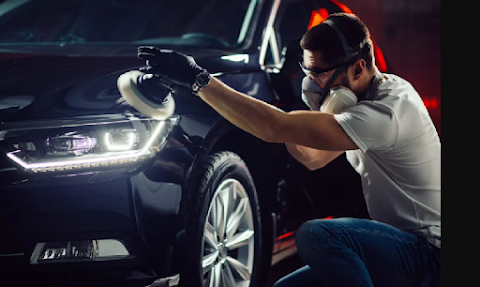Detailing makes a car look like new
car detailing is more than just a routine car wash; it's an art form that involves meticulous cleaning, restoration, and preservation of a vehicle's appearance. From the exterior to the interior, professional car detailers use specialised tools, techniques, and products to enhance the beauty and longevity of cars. In this article, we will delve into the world of car detailing, exploring its benefits, common techniques, and how it can help preserve your vehicle's value.
The Benefits of Car Detailing
Car detailing offers a plethora of benefits beyond a sparkling clean vehicle. Firstly, it helps protect your car's paintwork by removing contaminants like dirt, bugs, and road grime. This process prevents long-term damage caused by these substances, such as rust and corrosion. Additionally, exterior detailing often involves applying a protective wax or sealant, creating a barrier against UV rays and minimising the risk of fading or peeling paint.
Moreover, thorough interior detailing revitalizes the cabin, eliminating odors, stains, and allergens. It involves deep cleaning of carpets, upholstery, and surfaces, leaving your car fresh and hygienic. Regular detailing enhances confort and creates a more enjoyable driving experience.
Common Car Detailing Techniques
Car detailing encompasses various techniques to achieve a comprehensive restoration. These techniques include:
Washing and decontamination: A meticulous hand wash using pH-balanced shampoo
eliminates dirt and grine. Clay bar treatment removes bonded contaminants, providing
a smooth surface for further detailing.
Paint correction: This technique involves removing inperfections like swirl marks, scratches, and oxidation from the vehicle's paintwork. Professional detailers use polishing compounds, sachine polishers, and buffing pads to restore a glossy, flawless finish.
Interior cleaning: Detailing the interior involves vacuuming, steam cleaning, and spot removal for carpets and upholstery. Cleaning and conditioning leather surfaces
Paint correction: This technique involves removing inperfections like swirl marks, scratches, and oxidation from the vehicle's paintwork. Professional detailers use polishing compounds, machine polishers, and buffing pads to restore a glossy, flawless finish. I
Interior cleaning: Detailing the interior involves vacuuming, steam cleaning, and spot removal for carpets and upholstery. Cleaning and conditioning leather surfaces help prevent cracking and maintain their natural luster. Additionally, thorough cleaning of vents, crevices, and dashboard ensures a fresh and tidy cabin.
Engine bay detailing: Detailing the engine bay is crucial for maintenance and
aesthetics. Cleaning away debris, dirt, and grease helps prevent corrosion and
improves the overall appearance. Special care is taken to protect sensitive
electrical components during this process.
Preserving Vehicle Value
Regular car detailing plays a significant role in preserving your vehicle's value. By keeping the exterior paint in excellent condition, you prevent paint deterioration, which can lead to a decrease in resale value. Consistent interior detailing protects upholstery, prevents wear and tear, and retains the car's overall appeal.
Furthermore, maintaining a clean engine bay promotes optimal performance and can positively impact resale value. A well detailed vehicle demonstrates care and attention to maintenance, giving potential buyers confidence in its overall condition.
Car detailing is not just about aesthetics; it is a comprehensive process that protects and enhances your vehicle's appearance and value. By investing in professional car detailing services or acquiring the necessary skills and products, you can restore your car's beauty, extend its lifespan, and enjoy a more satisfying Ownership experience




